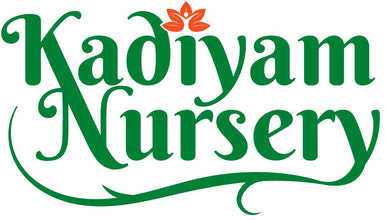-
Plant Description:
-
Arenga englerii, also known as the Dwarf Sugar Palm, is a small to medium-sized palm tree that is native to the tropical rainforests of Southeast Asia. It is a popular ornamental plant in many parts of the world because of its attractive appearance and relatively low maintenance requirements.
The Dwarf Sugar Palm has a single trunk that can grow to a height of up to 15 meters (49 feet). It has long, dark green leaves that are divided into many narrow, pointed leaflets. The tree produces small white flowers, followed by clusters of small, round fruits that turn black when ripe. The fruit of the Dwarf Sugar Palm is edible and has a sweet, sugary taste.
In cultivation, the Dwarf Sugar Palm prefers a humid, tropical climate and well-draining soil. It is relatively drought-tolerant and does not require much fertilizer, but it does benefit from regular watering and occasional pruning to maintain its shape. The tree can be grown in containers or in the ground, and it is often used as a focal point in landscaping or as a specimen plant in gardens.
-
Growing tips:
-
To care for an Arenga englerii tree, follow these guidelines:
-
Plant the tree in a location that receives partial to full sun, and in well-draining soil that is slightly acidic.
-
Water the tree regularly, but be careful not to over-water it. The soil should be allowed to dry out slightly between watering.
-
Fertilize the tree with a balanced fertilizer once a month during the growing season.
-
Prune the tree regularly to remove any dead or damaged leaves and to maintain its shape.
-
Protect the tree from strong winds, as the leaves can be easily damaged by gusts.
-
If the tree is grown in a container, repot it every few years using a well-draining soil mix.
Overall, the Dwarf Sugar Palm is a relatively low-maintenance plant that is easy to care for. As long as it is grown in the right location and provided with the right amount of water and fertilization, it should thrive.
-
Benifits :
-
There are several benefits to growing an Arenga englerii tree:
-
Ornamental value: The Dwarf Sugar Palm is an attractive tree that adds a tropical touch to any landscape. It is often used as a focal point in gardens or as a specimen plant.
-
Low maintenance: The tree is relatively easy to care for and does not require much fertilization or pruning.
-
Drought-tolerant: The tree is relatively drought-tolerant and can survive short periods of dryness.
-
Adaptable: The Dwarf Sugar Palm can be grown in a variety of soil types and is suitable for both indoor and outdoor cultivation.
-
Edible fruit: The tree produces small, round fruits that are edible and have a sweet, sugary taste.
Overall, the Arenga englerii tree is a valuable addition to any landscape or garden, offering both ornamental value and practical benefits.

